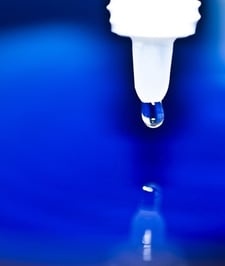 After the preparation of DNA solutions, some of the enzymes involved may be impacted by the residues of the chemicals that have been used. This may include excess salt, SDS, or other inhibitory substances. In order to properly utilize the results of the DNA preparation, it is sometimes required to perform a drop dialysis. Ideally, the drop dialysis will be able to "wash" the enzymes in question, removing the residue and providing a better and more accurate result.
After the preparation of DNA solutions, some of the enzymes involved may be impacted by the residues of the chemicals that have been used. This may include excess salt, SDS, or other inhibitory substances. In order to properly utilize the results of the DNA preparation, it is sometimes required to perform a drop dialysis. Ideally, the drop dialysis will be able to "wash" the enzymes in question, removing the residue and providing a better and more accurate result.
The Process of Drop Dialysis
During the process of drop dialysis, a buffer is introduced into a beaker, petri plate, or other prepared container. The most common buffer used is double-distilled water. A Type-VS membrane is then floated with its shiny side up on top of the buffer and the filter is allowed to be completely saturated, a process which takes approximately five minutes. At this point, it's important to check the filter for any air bubbles which might become trapped between it and the buffer. The DNA is dropped slowly onto the center of the filter through a pipette. If the DNA remains on the center of the membrane, the entire test sample can be placed onto it. If the DNA travels, then the DNA is not suitable for dialysis. DNA that will not remain on the center of the filter may first require an additional process known as alcohol precipitation.
The container is then covered for approximately one to four hours. After waiting the appropriate amount of time, the DNA is re-collected through the use of another pipette and then sent through a microcentrifuge, along with a rinse of the membrane with the buffer. A spectrophotometer or agarose gel electrophoresis is then used to estimate the concentration of the DNA. At this point, the excess chemicals that could otherwise interfere with DNA results should be removed.
Though drop dialysis can be processed with other types of buffer, double-distilled water is generally recommended. The process of drop dialysis can also be repeated with a sample if it is found to still have unnecessary residue or contaminants. When repeating the process of drop dialysis, it is important to use a fresh buffer and a fresh filter -- but otherwise the sample can be sent through and processed for additional amounts of time, as needed.
The Top Challenges of Drop Dialysis
Drop dialysis requires a certain level of manual dexterity to perform, as it is not simply a chemical reaction -- it is required that the individual performing this be able to place the filter correctly and be able to drop the DNA on the filter accurately. If the DNA is not dropped in the center of the filter or the filter is missed, there process may need to be restarted. Further, the filter may also flip over or tip.
Because the filter can move unpredictably over the buffer material, it is highly recommended that individuals practice the process of drop dialysis thoroughly before attempting it with an actual sample. Once the process has been mastered, it's generally fairly easy; it's simply a matter of understanding the way the components work together. Those who are new to the process may want to introduce the DNA very slowly, so that they can react to any sudden movements.






